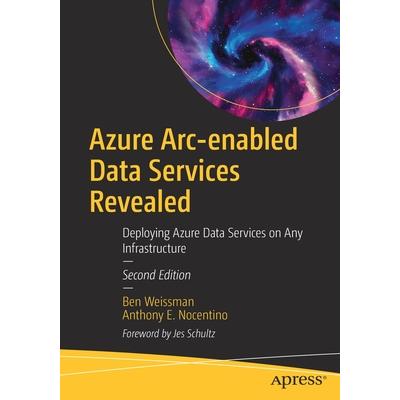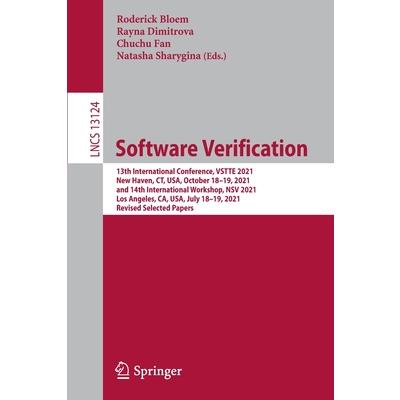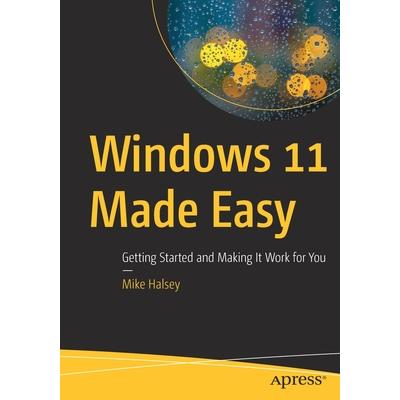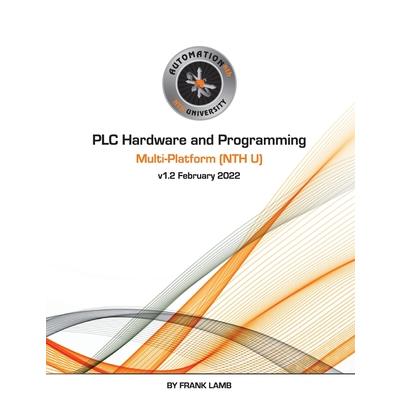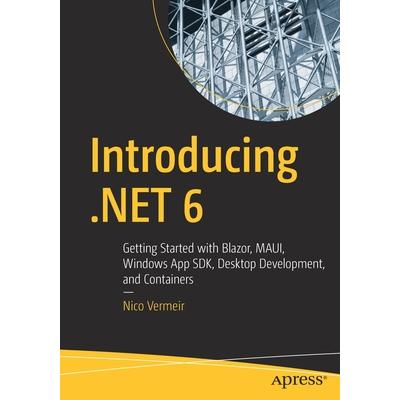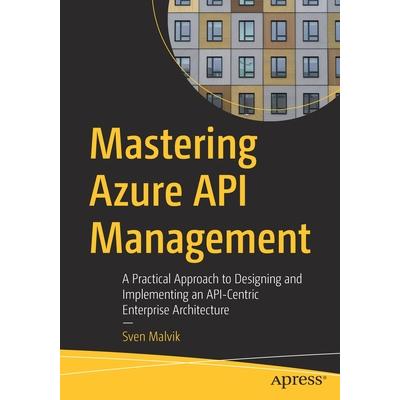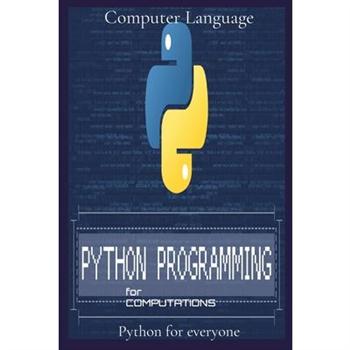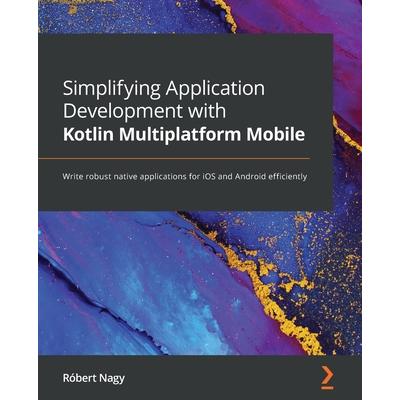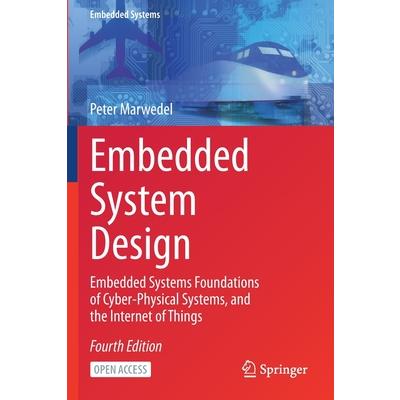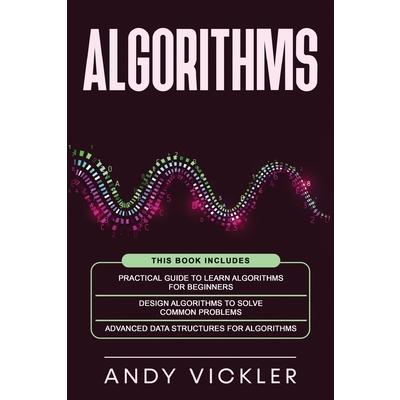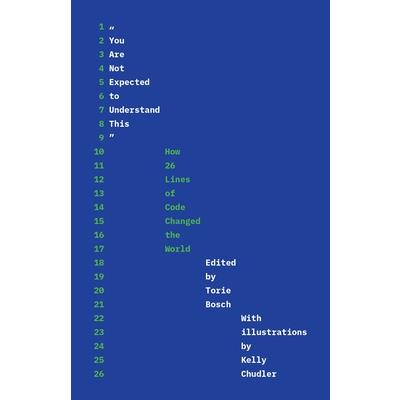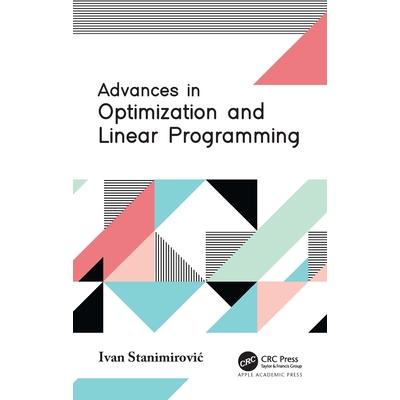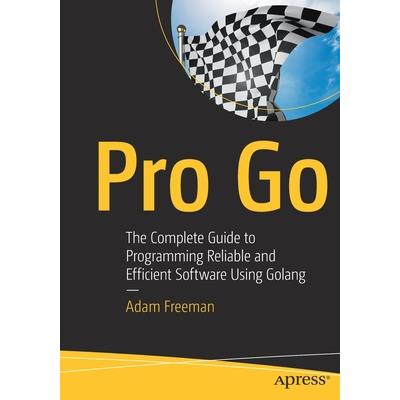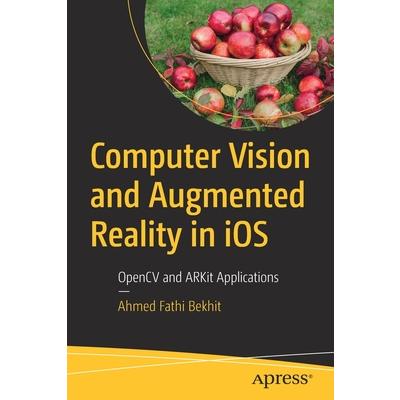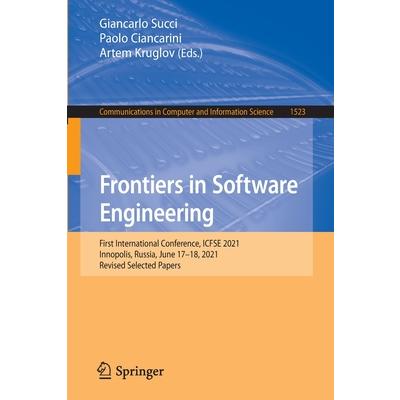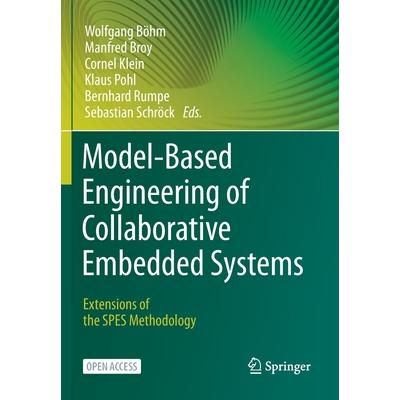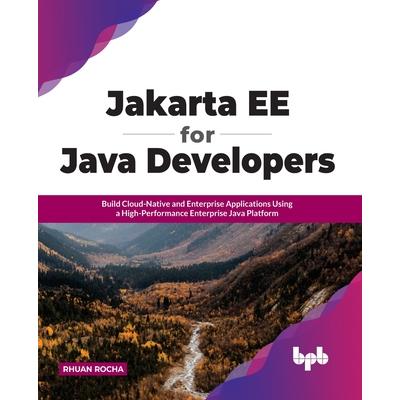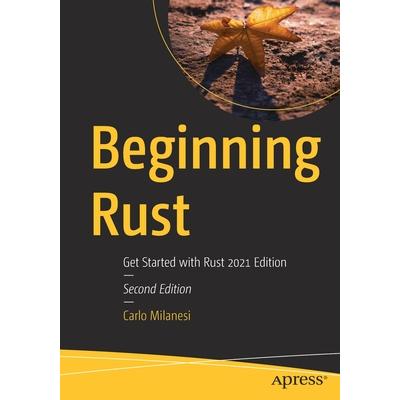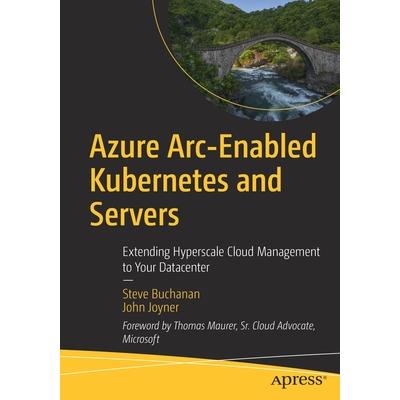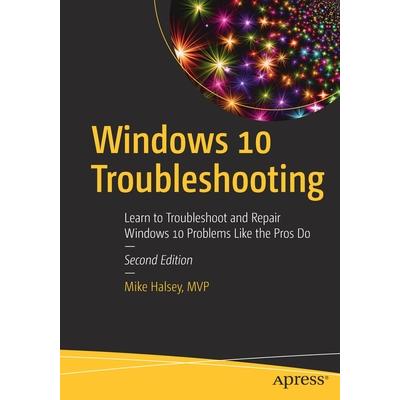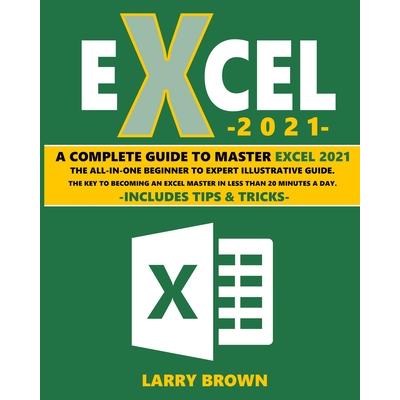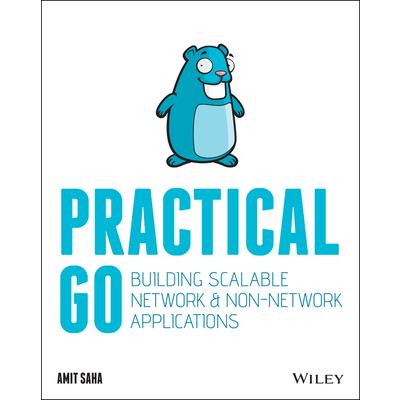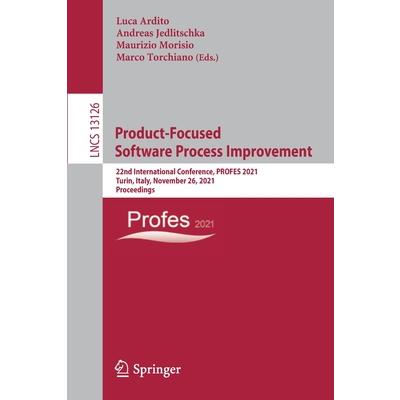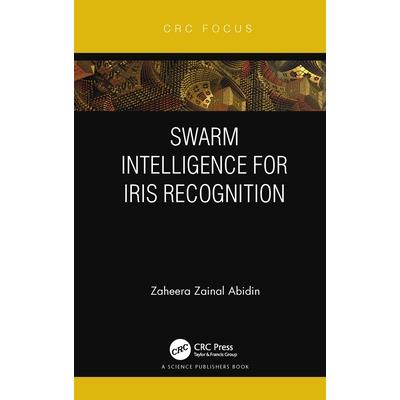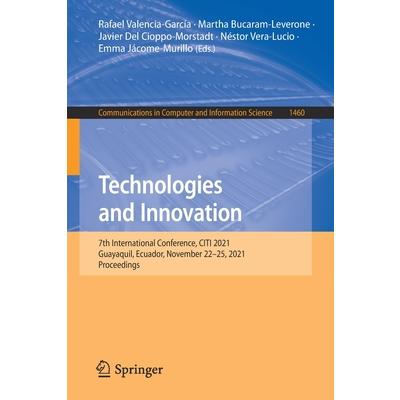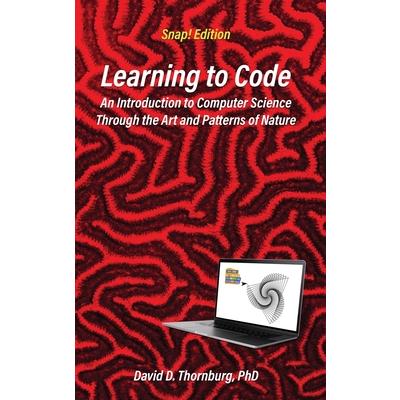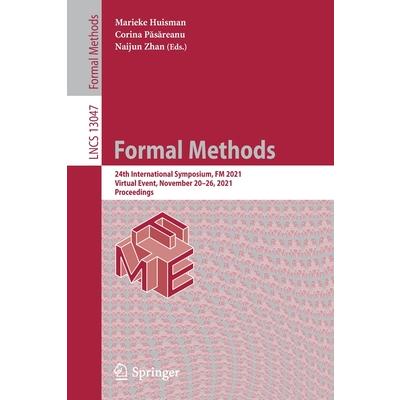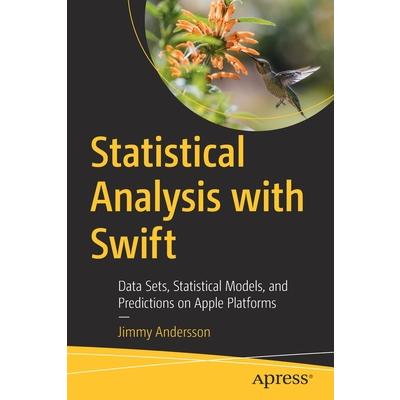Azure Arc-Enabled Data Services Revealed
Get introduced to Azure Arc-enabled Data Services and the powerful capabilities to deploy and manage local, on-premises, and hybrid cloud data resources using the same centralized management and tooling you get from the Azure cloud. This book shows how you can deploy and manage databases running on SQL Server and Postgres in your corporate data center or any cloud as if they were part of the Azure platform. This second edition has been updated to the latest codebase, allowing you to use this book as your handbook to get started with Azure Arc-enabled Data Services today. Learn how to benefit from Azure's centralized management, the automated rollout of patches and updates, managed backups, and more. This book is the perfect choice for anyone looking for a hybrid or multi-vendor cloud strategy for their data estate. The authors walk you through the possibilities and requirements to get Azure SQL Managed Instance and PostgresSQL Hyperscale deployed outside of Azure, so the services are accessible to companies that cannot move to the cloud or do not want to use the Microsoft cloud exclusively. The technology described in this book will benefit those required to keep sensitive services, such as medical databases, away from the public cloud equally as those who can't move to a public cloud for other reasons such as infrastructure constraints but still want to benefit from the Azure cloud and the centralized management and tooling that it supports.What You Will LearnUnderstand the fundamentals and architecture of Azure Arc-enabled data servicesBuild a multi-cloud strategy based on Azure Data ServicesDeploy Azure Arc-enabled data services on premises or in any cloudDeploy Azure Arc-enabled SQL Managed Instance on premises or in any cloudDeploy Azure Arc-enabled PostgreSQL Hyperscale on premises or in any cloudBackupand Restore your data that is managed by Azure Arc-enabled data servicesManage Azure-enabled data services running outside of AzureMonitor Azure-enabled data services through Grafana and KibanaMonitor Azure-enabled data services running outside of Azure through Azure MonitorWho This Book Is ForDatabase administrators and architects who want to manage on-premises or hybrid cloud data resources from the Microsoft Azure cloud. Especially for those wishing to take advantage of cloud technologies while keeping sensitive data on premises and under physical control.
Software Verification
This book constitutes the refereed proceedings of the 13th International Conference on Verified Software, VSTTE 2021, and the 14th International Workshop on Numerical Software Verification, NSV 2021, held online, in July/ October 2021. Due to COVID-19 pandemic the conference was held virtually.There were 10 papers presented in this volume were carefully reviewed and selected from 20 submissions. The papers focuses on challenges of the verification of cyber-physical systems with machine learning components and making large-scale verified software a practical reality and much more.
Learn SOLIDWORKS 2022 - Second Edition
Get to grips with leading 3D engineering and product design application to design robust 3D models and achieve CSWA and CSWP certification with SOLIDWORKS Specialist, Tayseer AlmattarKey Features: - Gain comprehensive insights into the core aspects of 3D modeling's mechanical parts- Learn how to generate assembly designs with both standard and advanced mates- Discover design practices for both 2D as well as 3D modeling and prepare to achieve CSWP and CSWA certificationBook Description: SOLIDWORKS is the leading choice for 3D engineering and product design applications across industries such as aviation, automobile, and consumer product design. This book helps you to get up and running with SOLIDWORKS and understand each new concept and tool with the help of easy-to-follow exercises.You'll begin with the basics, exploring the software interface and finding out how to work with drawing files. The book then guides you through topics such as sketching, building complex 3D models, generating dynamic and static assemblies, and generating 2D engineering drawings to prepare you to take on any design project. You'll also work with practical exercises to get hands-on experience with creating sketches, 3D part models, assemblies, and drawings. To reinforce your understanding of SOLIDWORKS, the book is supplemented by downloadable files that will help you to understand the concepts and exercises more easily. Finally, you'll also work on projects for 3D modeling objects inspired by everyday life.By the end of this SOLIDWORKS book, you'll have gained the skills you need to create professional 3D mechanical models using SOLIDWORKS and be able to prepare effectively for the Certified SOLIDWORKS Associate (CSWA) and Certified SOLIDWORKS Professional (CSWP) exams.What You Will Learn: - Understand the fundamentals of SOLIDWORKS and parametric modeling- Create professional 2D sketches as bases for 3D models using simple and advanced modeling techniques- Use SOLIDWORKS drawing tools to generate standard engineering drawings- Evaluate mass properties and materials for designing parts and assemblies- Join different parts together to form static and dynamic assemblies- Discover expert tips and tricks to generate different part and assembly configurations for your mechanical designsWho this book is for: This book is for aspiring engineers, designers, makers, draftsmen, and hobbyists looking to get started with SOLIDWORKS and explore the software. Individuals who are interested in becoming Certified SOLIDWORKS Associates (CSWAs) or Certified SOLIDWORKS Professionals (CSWPs) will also find this book useful. No specific background is needed to follow the concepts in the book as it starts from the basics of SOLIDWORKS. However, basic theoretical knowledge of 3D modeling will be helpful to get the most out of this book.Table of Contents- Introduction to SOLIDWORKS- Interface and Navigation- SOLIDWORKS 2D Sketching Basics- Special Sketching Commands- Basic Primary One-Sketch Features- Basic Secondary Multi-Sketch Features- Materials and Mass Properties- Standard Assembly Mates- Introduction to Engineering Drawing- Basic SOLIDWORKS Drawing Layout and Annotations- Bills of Materials- Advanced SOLIDWORKS Mechanical Core Features- Equations, Configurations, and Design Tables- SOLIDWORKS Assemblies and Advanced Mates- Advanced SOLIDWORKS Assemblies Competencies
Designing Microservices Platforms with NATS
A complete reference for designing and building scalable microservices platforms with NATS messaging technology for inter-service communication with security and observabilityKey Features: Understand the use of a messaging backbone for inter-service communication in microservices architectureDesign and build a real-world microservices platform with NATS as the messaging backbone using the Go programming languageExplore security, observability, and best practices for building a microservices platform with NATS Book Description: Building a scalable microservices platform that caters to business demands is critical to the success of that platform. In a microservices architecture, inter-service communication becomes a bottleneck when the platform scales. This book provides a reference architecture along with a practical example of how to implement it for building microservices-based platforms with NATS as the messaging backbone for inter-service communication.In Designing Microservices Platforms with NATS, you'll learn how to build a scalable and manageable microservices platform with NATS. The book starts by introducing concepts relating to microservices architecture, inter-service communication, messaging backbones, and the basics of NATS messaging. You'll be introduced to a reference architecture that uses these concepts to build a scalable microservices platform and guided through its implementation. Later, the book touches on important aspects of platform securing and monitoring with the help of the reference implementation. Finally, the book concludes with a chapter on best practices to follow when integrating with existing platforms and the future direction of microservices architecture and NATS messaging as a whole.By the end of this microservices book, you'll have developed the skills to design and implement microservices platforms with NATS.What You Will Learn: Understand the concepts of microservices architectureGet to grips with NATS messaging technologyHandle transactions and message delivery guarantees with microservicesImplement a reference architecture for microservices using NATSDiscover how to improve the platform's security and observabilityExplore how a NATS microservices platform integrates with an enterprise ecosystemWho this book is for: This book is for enterprise software architects and developers who want to gain hands-on microservices experience for designing, implementing, and managing complex distributed systems with microservices architecture concepts. Intermediate-level experience in any programming language and software architecture is required to make the most of this book.
Windows 11 Made Easy
Get started with Windows 11. This book shows you how to set up and personalize your PC in order to get the best experience from your documents, photos, and your time online. The book introduces you to the new desktop, start menu, and settings panel. It covers everything that's been changed, added, or removed.Next, you will learn how to personalize and customize your PC, laptop, and tablet and how to make Windows 11 safer to use for your children and family. The book takes you through how to keep your personal information safe and secure, and how to make sure your precious documents and photos are backed-up with OneDrive.The book shows you how to use accessibility tools to make Windows 11 easier to use, see, hear, and touch, and how to have fun with Android apps and Xbox gaming. You will also learn how to become more productive, how to connect to your college or workplace, and how you can use multiple desktops and snap layouts to get stuff done.After reading this book, you will be able to install, manage, secure, and make the best of Windows 11 for your PC. What Will You LearnInstall and use the Android apps on your PCSafely back up and safeguard your documents and photosMaximize battery life on your laptop or tabletMake Windows 11 easier to see, hear, touch, and useWho This Book Is ForAnyone planning to install Windows 11 and customize their PC with the new updates
PLC Hardware and Programming - Multi-Platform (NTH U)
This book approaches PLC training from a generic viewpoint. Most PLC platforms have many things in common; before beginning the study of a particular brand of PLC, it is important to learn the things that are common to all platforms. This course does this, pointing out some of the exceptions and different ways of doing things along the way. Resources used in the preparation of this course include information from many of the major PLC manufacturers; software examples are primarily drawn from Allen-Bradley RSLogix5000 and Siemens Step 7.
Introducing .Net 6
Welcome to .NET 6, Microsoft's unified framework that converges the best of the modern and traditional .NET Framework. This book will introduce you to the new aspects of Microsoft's fully supported .NET 6 Framework and will teach you how to get the most out of it. You will learn about the progress to one unified .NET, including MAUI and the revival of desktop development. You will dive into Roslyn, Blazor, CLI, Containers, Cloud, and much more, using a "framework first" learning approach. You will begin by learning what each tool is, its practical uses, and how to apply it and then you will try it out on your own for learning reinforcement. And, of course, there will be plenty of code samples using C# 10.Introducing .NET 6 is aimed at .NET developers, both junior developers and those coming from the .NET framework, who want to understand everything the modern framework has to offer, besides the obvious programming languages. While you will still see a lot of fabulous C# 10 throughout the book, the focus of this learning is all about .NET and its tooling. What You Will LearnBecome a more versatile developer by knowing the variety of options available to you in the .NET 6 framework and its powerful toolingKnow the different front-end frameworks .NET offers, such as UWP, WPF, and WinForms, and how they stack up to each otherUnderstand the different communication protocols, such as REST and gRPC, for your back-end servicesDiscover the secrets of cloud-native development, such as serverless computing with Azure Functions and deploying containers to Azure Container ServicesMaster the command line, take your skill set to the cloud, and containerize your .NET 6 app Who This Book IsForBoth students and more experienced developers, C# developers who want to learn more about the framework they use, developers who want to be more productive by diving deeper into the tooling that .NET 6 brings to the fold, developers who need to make technical decisions. A working knowledge of C# is recommended to follow the examples used in the book.
Mastering Azure API Management
Unsure of how or where to get started with Azure API Management, Microsoft's managed service for securing, maintaining, and monitoring APIs? Then this guide is for you. Azure API Management integrates services like Azure Kubernetes Services (AKS), Function Apps, Logic Apps, and many others with the cloud and provides users with a single, unified, and well-structured fa癟ade in the cloud. Mastering Azure API Management is designed to help API developers and cloud engineers learn all aspects of Azure API Management, including security and compliance. It provides a pathway for getting started and learning valuable management and administration skills. You will learn what tools you need to publish a unified API fa癟ade towards backend services, independent of where and what they run on. You will begin with an overview of web APIs. You will learn about today's challenges and how a unified API management approach can help you address them. From there you'll dive into the key concepts of Azure API Management and be given a practical view and approach of API development in the context of Azure API Management. You'll then review different ways of integrating Azure API Management into your enterprise architecture. From there, you will learn how to optimally maintain and administer Azure API Management to secure your APIs, and learn from them, gaining valuable insights through logging and monitoring. What You Will Learn Discover the benefits of an enterprise API platformUnderstand the basic concepts of API management in the Microsoft cloudDevelop and publish your APIs in the context of Azure API ManagementOnboard users through the developer portalHelp your team or other developers to publish their APIs more efficientlyIntegrate Azure API Management securely into your enterprise architectureManage and maintain to secure your APIs and gain insights Who This Book Is ForAPI developers, cloud engineers, and Microsoft Azure enthusiasts who want to deep dive into managing an API-centric enterprise architecture with Azure API Management. To get the most out of the book, the reader should have a good understanding of micro services and APIs. Basic coding skills, including some experience with PowerShell and Azure, are also beneficial.
Essential Spectrum-Based Fault Localization
Program debugging has always been a difficult and time-consuming task in the context of software development, where spectrum-based fault localization (SBFL) is one of the most widely studied families of techniques. While it's not particularly difficult to learn about the process and empirical performance of a particular SBFL technique from the available literature, researchers and practitioners aren't always familiar with the underlying theories. This book provides the first comprehensive guide to fundamental theories in SBFL, while also addressing some emerging challenges in this area. The theoretical framework introduced here reveals the intrinsic relations between various risk evaluation formulas, making it possible to construct a formula performance hierarchy. Further extensions of the framework provide a sufficient and necessary condition for a general maximal formula, as well as performance comparisons for hybrid SBFL methods. With regard to emerging challenges in SBFL, the book mainly covers the frequently encountered oracle problem in SBFL and introduces a metamorphic slice-based solution. In addition, it discusses the challenge of multiple-fault localization and presents cutting-edge approaches to overcoming it. SBFL is a widely studied research area with a massive amount of publications. Thus, it is essential that the software engineering community, especially those involved in program debugging, software maintenance and software quality assurance (including both newcomers and researchers who want to gain deeper insights) understand the most fundamental theories - which could also be very helpful to ensuring the healthy development of the field.
C# 10 Quick Syntax Reference
Discover what's new in C# and .NET for Windows programming. This book is a condensed code and syntax reference to the C# programming language, updated with the latest features of version 10 for .NET 6. You'll review the essential C# 10 and earlier syntax, not previously covered, in a well-organized format that can be used as a handy reference. Specifically, unions, generic attributes, CallerArgumentExpression, params span, Records, Init only setters, Top-level statements, Pattern matching enhancements, Native sized integers, Function pointers and more.You'll find a concise reference to the C# language syntax: short, simple, and focused code examples; a well laid out table of contents; and a comprehensive index allowing easy review. You won't find any technical jargon, bloated samples, drawn-out history lessons, or witty stories. What you will find is a language reference that is to the point and highly accessible. The book is a must-have for any C# programmer.What You Will LearnEmploy nullable reference types Work with ranges and indices Apply recursive patterns to your applicationsUse switch expressions Who This Book Is For Those with some experience in programming, looking for a quick, handy reference. Some C# or .NET recommended but not necessary.
Photoshop 7 Trade Secrets
How do you get the best out of Photoshop? It's a combination of knowing what you want and knowing how to do it properly: a mixture of creativity and acumen. As you learn more, you make fewer mistakes, your workflow becomes faster, and you have more time to explore creative possibilities. This book is dedicated to showing you the tricks of the trade, to sharing the insider's knowledge which will speed up your work, and to improving your understanding of Photoshop as a tool. The book is divided into eight chapters, in the first three we look at ways of improving your efficiency, good selection techniques, and how to use layers effectively. In the next three chapters we look at practical applications of Photoshop for retouching and correction, Web graphics and special effects. The final two chapters look at the practicalities of Photoshop's configuration and hardware. Throughout the book, we cover the new features of Photoshop 7, so if you're not yet up to speed with the latest version, we'll show you the way. You've mastered the basics of Photoshop and you're ready to move on to the next level - this book is jam-packed with the hints, tips, and advice from four Photoshop experts that you need to take you there. To get the most information out of each of the authors that we possibly could, we used a collaborative method of writing. Each of the four authors chose two subject areas to be the main writer on, and once they had finished writing the sections, they were passed on to the other three authors for them to add their own tips and tricks to. All these parts then went out to review, and the reviewers (themselves Photoshop users) added their tips to the tip-tank. All of these tips then came together in editorial, where they were ordered and polished. In this way, we hoped to maximize the amount of insightful and essential information, and to give you the greatest benefit.
Simplifying Application Development with Kotlin Multiplatform Mobile
Explore the new Kotlin Multiplatform to build native apps for Android and iOS while sharing business logic between appsKey Features: Improve app development speed dramatically by writing the business logic in KotlinImplement a native user interface and work with platform-specific APIsLeverage Kotlin Multiplatform Mobile's code-sharing capabilities for your projectsBook Description: Sharing code between platforms can help developers gain a competitive edge, and Kotlin Multiplatform Mobile (KMM) offers a sensible way to do it. KMM helps mobile teams share code between Android and iOS in a flexible way, leaving room for native development.The book begins by helping you to gain a clear understanding of the Kotlin Multiplatform approach, how it works, and how it is different from cross-platform technologies, such as React Native and Flutter, and code sharing options, such as C++. You'll then see how your team can use this software development kit (SDK) to build native applications more effectively by learning timeless concepts and working through practical examples. As you advance, you'll get to grips with the core concepts, understand why UI sharing fails, and get hands-on with developing a small KMM application. Finally, you'll discover expert tips and best practices, along with production- and adoption-related questions, that will help you take the next step in your project and career.By the end of this Kotlin book, you'll have gained a solid understanding of the capabilities of KMM and be able to share code between Android and iOS flexibly.What You Will Learn: Get acquainted with the multiplatform approach and KMM's competitive edgeUnderstand how Kotlin Multiplatform works under the hoodGet up and running with the Kotlin language quickly in the context of SwiftFind out how to share code between Android and iOSExplore tips and best practices in KMM to increase app development efficiencyDiscover adoption tips to integrate KMM into existing or new production appsWho this book is for: This book is for native Android and iOS developers who want to build high-quality apps using an efficient development process. Knowledge of the framework and the languages used is necessary, that is, Android with Java or Kotlin and iOS with Objective-C or Swift. For Swift developers, the book assumes no knowledge of Kotlin as this will be covered in the context of Swift.
C++ Software Interoperability for Windows Programmers
Get up-to-speed quickly and connect modern code written in C#, R, and Python to an existing codebase written in C++. This book for practitioners is about software interoperability in a Windows environment from C++ to languages such as C#, R, and Python. Using a series of example projects, the book demonstrates how to connect a simple C++ codebase packaged as a static or dynamic library to modern clients written in C#, R, and Python. The book shows you how to develop the in-between components that allow disparate languages to communicate. This book addresses a fundamental question in software design: given an existing C++ codebase, how does one go about connecting that codebase to clients written in C#, R, and Python? How is the C++ functionality exposed to these clients? One answer may be to rewrite the existing codebase in the target language. This is rarely, if ever, feasible and this book's goal is to save you the pain and the high costof throwing out valuable existing code by showing you how to make that older code function alongside and with the more modern languages that are commonly in use today. The knowledge you will gain from reading this book will help you broaden your architectural choices and take advantage of the growing amount of talent around newer languages. What You Will LearnBuild components that connect C++ to other languagesTranslate between the C++ type system and the type systems of C#, R, and PythonWrite a managed assembly targeting the .NET frameworkCreate C++ packages for use in R/StudioDevelop Python modules based on high-performance C++ codeOvercome the difficulties and pitfalls involved in cross-language developmentWho This Book Is ForSoftware developers who are looking for ways to extend existing systems written in C++ usingmodern languages. Readers should have some programming experience, particularly in C++. Readers should also be familiar with common development tools such as Visual Studio, R/Studio, Visual Studio Code, and CodeBlocks.
Embedded System Design
A unique feature of this open access textbook is to provide a comprehensive introduction to the fundamental knowledge in embedded systems, with applications in cyber-physical systems and the Internet of things. It starts with an introduction to the field and a survey of specification models and languages for embedded and cyber-physical systems. It provides a brief overview of hardware devices used for such systems and presents the essentials of system software for embedded systems, including real-time operating systems. The author also discusses evaluation and validation techniques for embedded systems and provides an overview of techniques for mapping applications to execution platforms, including multi-core platforms. Embedded systems have to operate under tight constraints and, hence, the book also contains a selected set of optimization techniques, including software optimization techniques. The book closes with a brief survey on testing. This fourth edition has been updated andrevised to reflect new trends and technologies, such as the importance of cyber-physical systems (CPS) and the Internet of things (IoT), the evolution of single-core processors to multi-core processors, and the increased importance of energy efficiency and thermal issues.
Algorithms
Have you ever wondered how a programmer develops games and writes code without having to think too much? Do you want to know what makes a programmer confident about the code they write? Do you want to learn how programmers use algorithms to determine how to structure their programs before they develop it? If you did, this is the book for you. An algorithm is a set of rules or instructions you provide to a system. The system performs a specific process to answer a question using these instructions. As an amateur or expert, it is important for you to understand what an algorithm is and how you should define it. Once you learn to develop an algorithm, you can easily learn to develop code to execute that algorithm. This book will also show you how to implement the sorting and searching algorithms using C and Java programming languages, since these are the most common languages used by programmers. Bear in mind an algorithm is only a set of instructions, and this means you can use an algorithm to write code using different programming languages. You will only need to understand the properties of the programming language and use the right syntax. Are you interested in furthering your knowledge of algorithms? Do you want to learn how they work for real-world problems? Then you've come to the right place. This guide will walk you through algorithm design before digging into some of the top design techniques. Here's what you will learn: - The steps involved in designing an algorithm- The top algorithm design techniques- The Divide and Conquer algorithm- The Greedy Algorithm- Dynamic Programming- The Branch and Bound Algorithm- The Randomized Algorithm- Recursion and backtrackingAnd everything that goes with them.Included are plenty of algorithm designs and code implementations to show you how it all works.Are you studying data science and want to take your learning further ? Data structures are an integral part of data science, machine learning, and algorithms, all aimed at solving programming challenges that might seem insurmountable at the outset. Advanced Data Structures for Algorithms builds on your current knowledge, taking your learning much deeper and teaching you how to solve even the trickiest of challenges. This book has been divided into four parts: Part One covers advanced lists, including: - An overview of linked lists- Doubly linked lists- XOR linked lists- Self-organizing lists- Unrolled linked listsPart Two covers trees, including: - Segment trees- Trie trees- Fenwick trees- AVL trees- Red-black trees- Scapegoat trees- Treap- N-aryPart Three discusses disjoint sets or Union-finds, as they are sometimes knownPart Four covers heaps and priority queues, including: - A brief discussion on binary heaps- Binomial heapsand more !You'll find plenty of code examples to help you make sense of things and common-sense explanations. If you want to advance your knowledge of data structures for algorithms you are in the right place.
You Are Not Expected to Understand This
Leading technologists, historians, and journalists reveal the stories behind the computer coding that touches all aspects of life-for better or worse Few of us give much thought to computer code or how it comes to be. The very word "code" makes it sound immutable or even inevitable. "You Are Not Expected to Understand This" demonstrates that, far from being preordained, computer code is the result of very human decisions, ones we all live with when we use social media, take photos, drive our cars, and engage in a host of other activities. Everything from law enforcement to space exploration relies on code written by people who, at the time, made choices and assumptions that would have long-lasting, profound implications for society. Torie Bosch brings together many of today's leading technology experts to provide new perspectives on the code that shapes our lives. Contributors discuss a host of topics, such as how university databases were programmed long ago to accept only two genders, what the person who programmed the very first pop-up ad was thinking at the time, the first computer worm, the Bitcoin white paper, and perhaps the most famous seven words in Unix history: "You are not expected to understand this." This compelling book tells the human stories behind programming, enabling those of us who don't think much about code to recognize its importance, and those who work with it every day to better understand the long-term effects of the decisions they make. With an introduction by Ellen Ullman and contributions by Mahsa Alimardani, Elena Botella, Meredith Broussard, David Cassel, Arthur Daemmrich, Charles Duan, Quinn DuPont, Claire L. Evans, Hany Farid, James Grimmelmann, Katie Hafner, Susan C. Herring, Syeda Gulshan Ferdous Jana, Lowen Liu, John MacCormick, Brian McCullough, Charlton McIlwain, Lily Hay Newman, Margaret O'Mara, Will Oremus, Nick Partridge, Benjamin Pope, Joy Lisi Rankin, Afsaneh Rigot, Ellen R. Stofan, Lee Vinsel, Josephine Wolff, and Ethan Zuckerman.
Web and Internet Economics
This book constitutes the refereed proceedings of the 17th International Conference on Web and Internet Economics, WINE 2021, which was held online during December 14-17, 2021. The conference was originally planned to take place in Potsdam, Germany, but changed to a virtual event due to the COVID-19 pandemic. The 41 full papers presented in this volume were carefully reviewed and selected from 146 submissions. They were organized in topical sections as follows: mechanism design and pricing; matching, markets and equilibria; learning, fairness, privacy and behavioral models; social choice and cryptocurrencies.
Advances in Optimization and Linear Programming
This new volume provides the information needed to understand the simplex method, the revised simplex method, dual simplex method, and more for solving linear programming problems.Following a logical order, the book first gives a mathematical model of the linear problem programming and describes the usual assumptions under which the problem is solved. It gives a brief description of classic algorithms for solving linear programming problems as well as some theoretical results. It goes on to explain the definitions and solutions of linear programming problems, outlining the simplest geometric methods and showing how they can be implemented. Practical examples are included along the way. The book concludes with a discussion of multi-criteria decision-making methods.Advances in Optimization and Linear Programming is a highly useful guide to linear programming for professors and students in optimization and linear programming.
Pro Go
Best-selling author Adam Freeman explains how to get the most from Go, starting from the basics and building up to the most advanced and sophisticated features. You will learn how Go builds on a simple and consistent type system to create a comprehensive and productive development experience that produces fast and robust applications that run across platforms. Go, also known as Golang, is the concise and efficient programming language designed by Google for creating high-performance, cross-platform applications. Go combines strong static types with simple syntax and a comprehensive standard library to increase programmer productivity, while still supporting features such as concurrent/parallel programming. Each topic is covered in a clear, concise, no-nonsense approach that is packed with the details you need to learn to be truly effective. Chapters include common problems and how to avoid them. What You Will Learn Gain a solid understanding of the Go language and tools Gain in-depth knowledge of the Go standard library Use Go for concurrent/parallel tasks Use Go for client- and server-side development Who This Book Is For Experienced developers who want to use Go to create applications
Deploying .Net Applications
This book discusses the best ways to deploy applications developers are building using these new technologies. Since .NET 2.0 is a large release, significant adoptions of VS 2005 are expected and many people will be eager to learn about MSBuild and ClickOnce--information that this book cleanly and thoroughly provides.
Computer Vision and Augmented Reality in iOS
Learn how computer vision works, how augmented reality renders digital graphics into the physical world via an iPhone's camera, and how to incorporate these technologies into your own apps. This book shows you how to take full advantage of computer vision technologies.Interacting with other people online usually involves user-generated images and videos; whether it be "memes", short videos, or heavily-modified images. Before smart phones, generating this content required a professional using high-level image and video editing software. Not any more. This book will teach you to use computer vision in the most popular ways, such as for facial recognition, image to text analysis and, of course, recording a video of a dancing hot dog in your living room. Starting with the history of computer vision, image and video processing fundamentals, and an introduction to developing augmented reality applications, you'll learn to incorporate computer vision both in the content youcreate and the apps you develop for end users. Computer Vision and Augmented Reality in iOS reveals how every user with access to the Internet and a smart phone can easily generate heavily-modified images and videos. What You'll LearnIncorporate mathematics related to computer vision into your appsHost computer vision models remotely for mobile useImplement visual-inertial state estimation algorithms for mobile augmented realityWho This Book Is ForProfessionals or post graduate students in software development or engineering who have a basic understanding of how software development works and are interested in implementing computer vision into their development. It's recommended that readers already have a working knowledge of C++ and Swift.
Pro SharePoint 2003 Development Techniques
SharePoint is obviously a hot technology. But the last year in development technology has seen such major technology releases as Ajax, ASP.NET 2.0, SQL Server 2005, and more. These technologies combined have an audience too wide to describe. However, SharePoint 2003 was built before these new techniques and methodologies were ready for public consumption. And while the newer versions of SharePoint support development using these new techniques, the installed base of SharePoint 2003 is growing as we speak, and migration to SharePoint 2007 is still at least 18 months off. As such, developers are hungry to "webify" their existing SharePoint sites and applications. This book is the intersection between contemporary development techniques and SharePoint application development.
Essential Director 8.5 Fast
Everything you need to develop a professional web site, using Macromedia Director.
Frontiers in Software Engineering
This volume constitutes selected papers presented at the First International Conference on Frontiers in Software Engineering, ICFSE 2021, hekd in Innopolis, Russia, in June 2021. The 13 presented full papers were thoroughly reviewed and selected from 37 submissions. The papers present discussion on such topics as software engineering tools and environments; empirical software engineering; model-driven and domain-specific engineering, human factors and social aspects of software engineering, cooperative, distributed, and global software engineering, component-based software engineering, software metrics, and software engineering for green and sustainable technologies.
Lazy Functional Languages
This book explores a subclass known as lazy functional languages, beginning with the theoretical issues and continuing through abstract interpretation and offering improved techniques for implementation.The class of programming languages commonly known as functional includes Lisp, Scheme, ML, and Miranda TM. This book explores a subclass known as lazy functional languages, beginning with the theoretical issues and continuing through abstract interpretation and offering improved techniques for implementation. Now that advanced compiler technology has made it possible for lazy functional languages to compare favorably in run-time with more traditional languages such as C and Pascal, this monograph tackles problems of implementation such as time and memory overheads and restrictions on parallelism. Specifically, it describes a more efficient implementation model, the evaluation transformer model, that can be used when information is known about how functions use their arguments, develops a semantically sound analysis technique called abstract interpretation, which can determine this information, and shows how to use the information to compile more efficient code for sequential and parallel machines.ContentsIntroduction - Operational and Denotational Semantics of the Typed Lambda Calculus - A Framework for the Abstract Interpretation of Functional Languages - Some Example Abstract Interpretations - Evaluation Transformers - Implementing Functional Languages on Sequential and Parallel Machines - Relationship to Other Work - Epilogue - Appendixes: Additional Proofs - The Spineless G-Machine
Model-Based Engineering of Collaborative Embedded Systems
This Open Access book presents the results of the "Collaborative Embedded Systems" (CrESt) project, aimed at adapting and complementing the methodology underlying modeling techniques developed to cope with the challenges of the dynamic structures of collaborative embedded systems (CESs) based on the SPES development methodology.In order to manage the high complexity of the individual systems and the dynamically formed interaction structures at runtime, advanced and powerful development methods are required that extend the current state of the art in the development of embedded systems and cyber-physical systems. The methodological contributions of the project support the effective and efficient development of CESs in dynamic and uncertain contexts, with special emphasis on the reliability and variability of individual systems and the creation of networks of such systems at runtime.The project was funded by the German Federal Ministry of Education and Research (BMBF), and the case studies are therefore selected from areas that are highly relevant for Germany's economy (automotive, industrial production, power generation, and robotics). It also supports the digitalization of complex and transformable industrial plants in the context of the German government's "Industry 4.0" initiative, and the project results provide a solid foundation for implementing the German government's high-tech strategy "Innovations for Germany" in the coming years.
Jakarta Ee for Java Developers
This book provides a practical introduction to Enterprise Java Edition, Jakarta EE, including detailed features and capabilities. Equipped with numerous projects, each chapter demonstrates Jakarta EE capabilities with clean coding.The book starts with an introduction to Jakarta EE and its architecture. This will help to create a project using the Jakarta Servlet and exposure of an HTTP endpoint. The CDI is then used to inject dependencies, work with events asynchronously, and interact with CDI interceptors. Then, in the RESTful style, it can help to create a Jakarta RESTful resource to expose HTTP endpoints. We then investigate the Jakarta Enterprise Bean, which teaches us how to manage transactions and schedule tasks. The Jakarta Persistence is then used to integrate an application into a relational database, and the Jakarta Message is used to create an application using the Message Oriented Middleware (MOM). In terms of security, we use Jakarta Security to secure the endpoint of a Jakarta application.By the end of this book, the reader will be able to set up a Jakarta project and write applications that expose HTTP endpoints, integrate with a database, and deal with authentication and authorization. TABLE OF CONTENTS1. Introduction to Jakarta EE2. Jakarta Servlet3. Jakarta Context and Dependency Injection4. Jakarta RESTful Web Service5. Jakarta Enterprise Bean6. Jakarta Persistence7. Jakarta Messaging8. Jakarta Security9. Jakarta Bean Validation
What’s Where in the APPLE - Enhanced Edition
What's Where in the APPLE - Enhanced Edition: Volume 2 - Atlas & Gazetteer Volume 2: A comprehensive guide to the hardware and firmware organization and architecture of the Apple II computer, What's Where in the Apple discusses concepts and programming techniques useful for mastering the inner workings and hidden mechanisms of the Apple II (in Volume 1). This new Enhanced Edition is the most complete and accurate edition ever created, featuring improved readability, new coverage of the Apple IIe and Apple IIc, and a forward and historical perspective by publishing legend Robert Tripp. The numerical Atlas and alphabetical Gazetteer (in Volume 2) guide you to over 2,700 memory locations of PEEKs, POKEs, and CALLs in DOS and ProDOS. Applesoft and Integer BASIC users will learn how to speed up and streamline programs. Assembly language users will discover routines that simplify coding and interfacing. All users will find this book helpful to understand the Apple II and essential for mastering it!
Beginning Rust
Learn to program with Rust 2021 Edition, in an easy, step-by-step manner on Unix, the Linux shell, macOS, and the Windows command line. As you read this book, you'll build on the knowledge you gained in previous chapters and see what Rust has to offer. Beginning Rust starts with the basics of Rust, including how to name objects, control execution flow, and handle primitive types. You'll see how to do arithmetic, allocate memory, use iterators, and handle input/output. Once you have mastered these core skills, you'll work on handling errors and using the object-oriented features of Rust to build robust Rust applications in no time. Only a basic knowledge of programming in C or C++ and familiarity with a command console are required. After reading this book, you'll be ready to build simple Rust applications. What You Will Learn Get started programming with Rust Understand heterogeneous data structures and data sequences Define functions, generic functions, structs, and more Work with closures, changeable strings, ranges and slices Use traits and learn about lifetimes Who This Book Is For Those who are new to Rust and who have at least some prior experience with programming in general: some C/C++ is recommended particularly.
Azure Arc-Enabled Kubernetes and Servers
Welcome to this introductory guide to using Microsoft's Azure Arc service, a new multi-cloud management platform that belongs in every cloud or DevOps estate. As many IT pros know, servers and Azure Kubernetes Service drive a huge amount of consumption in Azure--so why not extend familiar management tools proven in Azure to on-premises and other cloud networks? This practical guide will get you up to speed quickly, with instruction that treads light on the theory and heavy on the hands-on experience to make setting up Azure Arc servers and Kubernetes across multiple clouds a lot less complex. Azure experts and MVPs Buchanan and Joyner provide just the right amount of context so you can grasp important concepts, and get right to the business of using and gaining value from Azure Arc. If your organization has resources across hybrid cloud, multi-cloud, and edge environments, then this book is for you. You will learn how to configure and use Azure Arc to uniformly manage workloads across all of these environments. What You Will Learn Introduces the basics of hybrid, multi-cloud, and edge computing and how Azure Arc fits into that IT strategyTeaches the fundamentals of Azure Resource Manager, setting the reader up with the knowledge needed on the technology that underpins Azure ArcOffers insights into Azure native management tooling for managing on-premises servers and extending to other clouds Details an end-to-end hybrid server monitoring scenario leveraging Azure Monitor and/or Azure Sentinel that is seamlessly delivered by Azure Arc Defines a blueprint to achieve regulatory compliance with industry standards using Azure Arc, delivering Azure Policy from Azure Defender for Servers Explores how Git and GitHub integrate with Azure Arc; delves into how GitOps is used with Azure ArcEmpowers your DevOps teams to perform tasks that typically fall under IT operationsDives into how to best use Azure CLI with Azure Arc Who This Book Is ForDevOps, system administrators, security professionals, and IT workers responsible for servers both on-premises and in the cloud. Some experience in system administration, DevOps, containers, and use of Git/GitHub is helpful.
Oracle Performance Tuning
The books in O'Reilly's Oracle series are authoritative -- they tell the whole story about complex topics, ranging from performance tuning to the use of packages in PL/SQL to new technologies like Power Objects. And they're independent; they're alternatives for readers who need to know how products and features really work. They're packed with real-world advice and techniques from practitioners in the field, and they come with disks containing code you can use immediately in your own applications. O'Reilly is the alternative for Oracle people who need to solve problems -- and solve them now. Performance tuning is crucial in any modern relational database management system. Too many organizations respond to Oracle performance problems by throwing money at these problems -- by buying larger and more expensive computers or by hiring expert consultants. But there's a lot you can do on your own to increase dramatically the performance of your existing system. Whatever version of Oracle you're running -- from Version 6 to Oracle8, proper tuning can save your organization a huge amount of money in additional equipment, extra memory, and hardware upgrades. The first edition of Oracle Performance Tuning became a classic for programmers, managers, database administrators, system administrators, and anyone who cares about improving the performance of an Oracle system. This second edition contains 400 pages of updated material updating on Oracle features, incorporating advice about disk striping and mirroring, RAID, client-server, distributed databases, MPPS, SMPs, and other architectures. It also includes chapters on parallel server, parallel query, backup and recovery, the Oracle Performance Pack, and more.
Windows 10 Troubleshooting
Troubleshoot Windows 10 the way the experts do, whatever device or form factor you are using. Focus on the problems that most commonly plague PC users and fix each one with a step-by-step approach that helps you understand the cause, solution, and tools required.Windows 10 is constantly evolving and changing and a great many aspects of the operating system, including many associated with troubleshooting and repair, have been changed, removed, replaced, or expanded since the first edition of this book was published. This new edition is updated with a dedicated chapter on using scripting tools for troubleshooting along with numerous updates on Windows device and update installation, Microsoft Sysinternals Suite, and Troubleshooting malware attacks. Additionally, there is extensive coverage of the technical diagnosis and troubleshooting tools you need from Event Viewer to Recovery Console. This book will help you discover the connections between different hardware and software in your devices, and how their bonds with external hardware, networks, and the Internet are more inter-dependent than you think. You will also learn how to support the increasing volume of home workers, and make sure they can stay online and active on PCs from your own organization or their own devices.If you are fed up with those nagging, day-to-day issues, want to avoid costly repairs, or just want to learn more about how PCs work, Windows 10 Troubleshooting is your ideal one-stop guide to the Windows 10 operating system.What You Will LearnUnderstand your PC's ecosystem and how to connect the dots, so you can successfully track problems to their sourceSupport home workers using PCs from your organization and family devices, and keep workers productive and onlineMake your PC safe and secure for family and everyone in your workplace, and ensure that datais kept secure from loss or attackUnderstand the threat from malware and viruses and a range of approaches to dealing with them, depending on the situationKnow tips and tricks for researching difficult problems, including third-party tools and useful web resourcesWho This Book Is ForAnyone using Windows 10 on a desktop, laptop, or hybrid device
Excel 2021
Do you wish to improve your Microsoft Excel knowledge to take advantage of its full potential?Are you looking for a complete guide that will show you smart shortcuts that will save you your precious time? Do you want to know features that will make you feel in your everyday and work life? If you answered yes, let this book bring you the knowledge to master MS Excel in less than 20 minutes per day. But where do you start?What functions are most important for beginners?What Formula is to be used to solve the problem? And how can you make the most of them? If you have these and other related questions, this book is for you so keep reading.In it, you will discover: Why Excel is now considered an essential skill required for any job positionAll the Features of Excel and how to make the most of them in your workbooks. The 15 most common formulas used in MS Excel that you definitely want to master and how to use them.The different Formula's text, Logical's formula, counting functions.How to intelligently synthesize a database using Pivot Tables and ChartsKnow the cause of the most common Excel errors and the solution to get rid of them.25 TIPS & TRICKS that you absolutely need to know And really... Much, much more! Scroll up and click Buy Now With 1-Click or Buy Now to get started!
Practical Go
YOUR PRACTICAL, HANDS-ON GUIDE TO WRITING APPLICATIONS USING GO Google announced the Go programming language to the public in 2009, with the version 1.0 release announced in 2012. Since its announcement to the community, and the compatibility promise of the 1.0 release, the Go language has been used to write scalable and high-impact software programs ranging from command-line applications and critical infrastructure tools to large-scale distributed systems. It's speed, simplicity, and reliability make it a perfect choice for developers working in various domains. In Practical Go - Building Scalable Network + Non-Network Applications, you will learn to use the Go programming language to build robust, production-ready software applications. You will learn just enough to building command line tools and applications communicating over HTTP and gRPC. This practical guide will cover: Writing command line applications Writing a HTTP services and clients Writing RPC services and clients using gRPC Writing middleware for network clients and servers Storing data in cloud object stores and SQL databases Testing your applications using idiomatic techniques Adding observability to your applications Managing configuration data from your applications You will learn to implement best practices using hands-on examples written with modern practices in mind. With its focus on using the standard library packages as far as possible, Practical Go will give you a solid foundation for developing large applications using Go leveraging the best of the language's ecosystem.
Software Engineering and Formal Methods
This book constitutes the refereed proceedings of the 19th International Conference on Software Engineering and Formal Methods, SEFM 2021, held as a virtual event, in December 2021. The 22 full papers presented together with 4 short papers were carefully reviewed and selected from 86 submissions. Also included are 2 invited talks and an abstract of a keynote talk. The papers cover a large variety of topics, including testing, formal verification, program analysis, runtime verification, meta-programming and software development and evolution. Chapter 'Configuration Space Exploration for Digital Printing Systems' is available open access under a Creative Commons Attribution 4.0 International License via link.springer.com.
Powershell Cookbook
How do you use PowerShell to navigate the filesystem, manage files and folders, or retrieve a web page? This introduction to the PowerShell language and scripting environment provides more than 400 task-oriented recipes to help you solve all kinds of problems. Intermediate to advanced system administrators will find more than 100 tried-and-tested scripts they can copy and use immediately. Updated for PowerShell 5.1 and Open Source PowerShell up to 7.0 and beyond, this comprehensive cookbook includes hands-on recipes for common tasks and administrative jobs that you can apply whether you're on the client or server version of Windows. You also get quick references to technologies used in conjunction with PowerShell, including regular expressions, the XPath language, format specifiers, and frequently referenced .NET, COM, and WMI classes. Learn how to use PowerShell on Windows 10 and Windows Server 2019 Tour PowerShell's core features, including the command model, object-based pipeline, and ubiquitous scripting Master fundamentals such as the interactive shell, pipeline, and object concepts Perform common tasks that involve working with files, internet-connected scripts, user interaction, and more Solve tasks in systems and enterprise management, such as working with Active Directory and the filesystem
Implementing Always On VPN
Implement and support Windows 10 Always On VPN, the successor to Microsoft's popular DirectAccess. This book teaches you everything you need to know to test and adopt the technology at your organization that is widely deployed around the world.The book starts with an introduction to Always On VPN and discusses fundamental concepts and use cases to compare and contrast it with DirectAccess. You will learn the prerequisites required for implementation and deployment scenarios. The book presents the details of recommended VPN protocols, client IP address assignment, and firewall requirements. Also covered is how to configure Routing and Remote Access Service (RRAS) along with security and performance optimizations. The Configuration Service Provider (CSP) is discussed, and you will go through provisioning Always On VPN to Windows 10 clients using PowerShell and XML as well as Microsoft Intune. Details about advanced client configuration and integration with Azure security services are included. You will know how to implement Always On VPN infrastructure in a redundant and highly available (HA) configuration, and guidance for ongoing system maintenance and operational support for the VPN and NPS infrastructure is provided. And you will know how to diagnose and troubleshoot common issues with Always On VPN. After reading this book, you will be able to plan, design, and implement a Windows 10 Always On VPN solution to meet your specific requirements. What Will You LearnPrepare your infrastructure to support Windows 10 Always On VPN on premises or in the cloudProvision and manage Always On VPN clients using modern management methods such as IntuneUnderstand advanced integration concepts for extending functionality with Microsoft AzureTroubleshoot and resolve common configuration and operational errors for your VPNWho This Book Is ForIT professionals and technology administrators for organizations of all sizes
Formal Methods
This book constitutes the refereed proceedings of the 24rd Brazilian Symposium on Formal Methods, SBMF 2021, which was held in December 2021. Due to COVID 19-pandemic it took place virtually. The 8 regular papers presented in this book were carefully reviewed and selected from 15 submissions. The papers detail the development, dissemination, and use of formal methods for the construction of high-quality computational systems, aiming to promote opportunities for researchers and practitioners with an interest in formal methods to discuss the recent advances in this area
Product-Focused Software Process Improvement
This book constitutes the refereed proceedings of the 22nd International Conference on Product-Focused Software Process Improvement, PROFES 2021, held in Turin, Italy, in November 2021. Due to COVID-19 pandemic the conference was held as a hybrid event. The 20 revised papers, including 14 full papers, 3 short papers and 3 industry papers, presented were carefully reviewed and selected from 48 submissions. The papers cover a broad range of topics related to professional software development and process improvement driven by product and service quality needs. They are organized in the following topical sections: agile and migration, requirements, human factors, and software quality.
Swarm Intelligence for Iris Recognition
Iris recognition is one of the highest accuracy techniques used in biometric systems. The accuracy of the iris recognition system is measured by False Reject Rate (FRR), which measures the authenticity of a user who is incorrectly rejected by the system due to changes in iris features (such as aging and health condition) and external factors that affect iris image, for instance, high noise rate. External factors such as technical fault, occlusion, and source of lighting that causes the image acquisition to produce distorted iris images create error, hence are incorrectly rejected by the biometric system. FRR can be reduced using wavelets and Gabor filters, cascaded classifiers, ordinal measures, multiple biometric modalities, and a selection of unique iris features. Nonetheless, in the long duration of the matching process, existing methods were unable to identify the authenticity of the user since the iris structure itself produces a template changed due to aging. In fact, the iris consists of unique features such as crypts, furrows, collarette, pigment blotches, freckles, and pupils that are distinguishable among humans. Earlier research was done by selecting unique iris features. However, these had low accuracy levels. A new way of identifying and matching the iris template using the nature-inspired algorithm is described in this book. It provides an overview of iris recognition that is based on nature-inspired environment technology. The book is useful for students from universities, polytechnics, community colleges; practitioners; and industry practitioners.
Learn T-SQL From Scratch
Advance your career as an SQL Server developer and DBAKey FeaturesCutting-edge coverage from community experts to learn T-SQL programming.Detailed explanation of concepts and techniques for easy understanding.Numerous practical demonstrations of T-SQL querying and programming applications.DescriptionThis book will teach you the fundamentals of SQL, SQL Server, databases, and how to write queries and programs using T-SQL. After reading this book, you will be able to create, modify, and delete databases, tables, and indexes. You can practice querying the data and running complex analytics on it. You will also be able to add, delete, and modify procedures, user-defined functions, triggers, and views.The journey of learning T-SQL with this book begins with an understanding of SQL and database fundamentals. You'll explore the SQL Server Management Studio (SSMS) used for developing and managing SQL Server databases. You'll then learn how to use DDL statements to create, modify and delete tables and indexes. Gradually, you'll be able to query in T-SQL using DML statements, joins, and various built-in functions. Successively, you'll learn XML and JSON data processing, and by the time you'll reach the end of this book, you will learn to program in SQL Server and various strategies to deploy your databases and programs.Throughout the book, you'll learn through simple examples and straightforward explanations, diagrams, and numerous real-world use-cases.What you will learnConcise understanding of relational databases and the SQL Server.Learn how to create database tables and indexes using T-SQL.Learn to add, modify, and delete records.Practice how to slice and dice data by running smart T-SQL queries.Perform advanced analytical analysis using various functions.Discover Error Handling and Transaction Management.Administer XML and JSON handling with T-SQL.Practice different deployment modes for T-SQL objects.Who this book is forIf you want to know how to design, develop, and maintain SQL Server databases and run sophisticated T-SQL queries without much hassle, this book is for you. Readers with a basic understanding of programming would have an advantage.Table of Contents1. Getting started2. Tables3. Index4. DML5. Built-In Functions - Part 16. Join, Apply, and Subquery7. Built-In Functions - Part 28. Dealing with XML and JSON9. Variables and Control Flow Statements10. Temporary Tables, CTE, and MERGE Statement11. Error Handling and Transaction Management12. Data Conversion, Cross Database, and Cross-Server Data Access13. Programmability14. DeploymentRead more
UIKit for Masterminds
Learn how to create apps with all the new features introduced to the UIKit framework, and how to build asynchronous and concurrent applications to take advantage of the multiple cores available in Apple Silicon chips (M1, M1 Pro, and M1 Max)UIKit for Masterminds guides you step by step through the process of creating applications for iPhones, iPads, and Mac computers. After reading this book, you will know how to program in Swift, how to design user interfaces with UIKit and Storyboards, and how to work with the most powerful frameworks available for app development.This book is a comprehensive course on how to build applications for Apple devices. Each chapter explores basic and complex concepts; from computer programming and the Swift language to everything you need to know to develop an application from scratch. The information is supported by practical examples that gradually introduce the technologies involved and make them accessible to everyone.UIKit for Masterminds was designed to prepare you for the future and was written for the mastermind in you.
Technologies and Innovation
This book constitutes refereed proceedings of the 7th International Conference on Technologies and Innovation, CITI 2021, held in Guayaquil, Ecuador, in November 2021.The 14 full papers presented in this volume were carefully reviewed and selected from 36 submissions. They are organized in topical sections named: semantic technologies and machine learning; natural language processing; mobile and collaborative technologies; networks and IoT technologies; ICT for agronomy and environment.
Learning to Code - An Invitation to Computer Science Through the Art and Patterns of Nature (Snap! Edition)
This is a book about discovery-the discoveries each of us can make when finding beauty in geometric patterns, beauty in mathematics, and beauty in computer programming. This is also a guide for teaching children to program computers in uniquely powerful ways.It is easy to see how one might find beauty in geometric patterns; this beauty forms the foundation of nature and art. We are continually entranced by geometric form-the symmetry of a butterfly's wings, the spiral of a snail's shell, the facets of a crystal-and each of these natural occurrences is perceived as having beauty associated with it. The hands of people have produced geometric art since marks were first made on cave walls or stones were first fashioned into tools. From the Pyramids and the Parthenon to the finest gold-link chain, the beauty of geometric form is clearly present for all who care to find it.Underlying the geometric pattern that we experience with our eyes lies a more subtle pattern of mathematical beauty, which is experienced intellectually-a collection of unifying principles that govern the arrangement and shapes of objects, both natural and crafted. Computer programming offers a bridge between the worlds of nature, design, and intellect.The computer today can be a tool for discovery and creative expression. It can be as malleable as a piece of clay and as powerful as the very ideas it helps to express. You do not have to be good at math or accept the passive ways computers are often used in classrooms. Thornburg's approach is eye-opening.The programming language used in this book is Snap! Snap! is a free block-based programming language designed at UC Berkeley that can be used on any device with a web browser. It looks a lot like Scratch, but adds a great deal of functionality and was designed to teach computer science concepts like those found in the NSF-funded Beauty and Joy of Computing Course. These added capabilities make it suitable for a serious introduction to computer science for high school or college students. Like Scratch, Snap! is in the Logo family of programming languages. The Logo programming language was designed for learning and its various dialects have been used by millions of learners for more than half a century. With Logo, students experience powerful ideas, solve problems, and create while engaging in conversation with the computer. Although coding is often thought of in vocational terms, Logo programming lies squarely in the grand traditions of the liberal arts and progressive education.The book includes step by step examples and code exploring tiles, tessellations, prime numbers, geometric shapes from circles to squirals, the mysteries of The Golden Mean, fractals, and recursion.
Formal Methods
This book constitutes the refereed proceedings of the 24th Symposium on Formal Methods, FM 2021, held virtually in November 2021. The 43 full papers presented together with 4 invited presentations were carefully reviewed and selected from 131 submissions. The papers are organized in topical sections named: Invited Presentations. - Interactive Theorem Proving, Neural Networks & Active Learning, Logics & Theory, Program Verification I, Hybrid Systems, Program Verification II, Automata, Analysis of Complex Systems, Probabilities, Industry Track Invited Papers, Industry Track, Divide et Impera: Efficient Synthesis of Cyber-Physical System.
Statistical Analysis with Swift
Chapter 1: Swift Primer- Introduction to Swift and its pros when working with large data sets- Provided data sets and how to load them using the Decodable protocol- Higher-Order Functions (map, filter, reduce, apply) Chapter 2: Introduction to Probability and Random Variables- What is a random variable?- Sample spaces- Laws and axioms of probability- Variable Independence- Conditional probability Chapter 3: Distributions and Random Numbers- Mass and density functions- Discrete distributions- Discrete uniform distribution- Bernoulli trials- Binomial distribution- Poisson distribution- Continuous distributions- Continuous uniform distribution- Exponential distribution- Normal distribution- Implement a random number generator that samples from a given distribution Chapter 4: Predicting House Sale Prices with Linear Regression- Central tendency measures- Variance measures- Association measures- Stratification of data- Linear regression Chapter 5: Hypothesis Testing- T Testing- Null and Alternative Hypotheses- P-value- Determining sample sizes Chapter 6: Data Compression Using Statistical Methods- Measurement scales- Calculate the distribution of example data- Compute a Huffman Tree- Encode the original data in a smaller package- &nb




